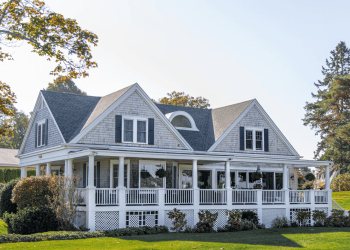Table of Contents

In an ever-evolving world, the concept of future-proofing your home has become increasingly important. As technology advances and environmental concerns grow, homeowners are looking for ways to make their homes adaptable, sustainable, and efficient.
Future-proofing is about anticipating changes and incorporating features that will ensure your home remains functional and valuable for years to come. Here are some key strategies to help you future-proof your home effectively.
1. Embrace Smart Home Technology
The integration of smart home technology is one of the most significant trends in future-proofing. From smart thermostats and lighting systems to security cameras and voice-activated assistants, these technologies can make your home more efficient, secure, and convenient.
Smart devices can be controlled remotely, often through a single app, making it easier to manage energy usage and enhance comfort. As technology continues to evolve, ensuring your home is equipped with the latest smart infrastructure can help it stay current.
2. Invest in Energy Efficiency
Energy efficiency is not just a trend but a necessity for future homes. Installing energy-efficient appliances, LED lighting, and advanced HVAC systems can significantly reduce your energy consumption. Solar panels are another excellent investment, providing a renewable energy source that can reduce reliance on the grid.
Moreover, proper insulation and double-glazed windows can help maintain indoor temperatures, reducing the need for excessive heating or cooling. These steps not only lower utility bills but also contribute to environmental sustainability.
3. Design for Flexibility
Flexibility in home design is crucial for future-proofing. Consider open floor plans that allow for easy reconfiguration of spaces. Movable walls and modular furniture can adapt to changing needs, such as accommodating a growing family or creating a home office.
Multi-functional rooms, like a guest room that doubles as a study, can maximize the usability of your space. This adaptability ensures that your home can meet evolving lifestyle demands without requiring extensive renovations.
4. Enhance Connectivity
As remote work and online education become more prevalent, robust internet connectivity is essential. Ensure your home has strong Wi-Fi coverage and consider wiring for high-speed internet throughout. Adding network cabling during construction or renovation can support the increasing number of connected devices in modern homes.
A future-proof home must be equipped to handle the digital demands of today and tomorrow.
5. Focus on Sustainability
Sustainability is a cornerstone of future-proofing. Use eco-friendly building materials, such as recycled steel, bamboo, or reclaimed wood, which have a lower environmental impact. Implementing water-saving fixtures and systems, like rainwater harvesting and greywater recycling, can also contribute to a sustainable home.
Green roofs and walls not only improve insulation but also enhance biodiversity and reduce the urban heat island effect. Sustainable practices ensure your home is environmentally responsible and resilient to future ecological challenges.
6. Plan for Accessibility
Consider the long-term needs of all potential occupants by incorporating universal design principles. Features like wider doorways, step-free entrances, and lever handles can make your home accessible to people of all ages and abilities.
Planning for aging in place ensures that your home can accommodate changes in mobility and health, making it a safe and comfortable environment for everyone.
Conclusion
Future-proofing your home involves a holistic approach that encompasses technology, energy efficiency, flexibility, connectivity, sustainability, and accessibility. By anticipating future trends and needs, you can create a home that remains relevant and valuable over time.
Consulting with professional Illinois contractors or finding trusted contractors near you, can provide expert guidance and ensure that your future-proofing efforts are effectively implemented. Investing in these strategies today will help you build a resilient and adaptable home for the future.







